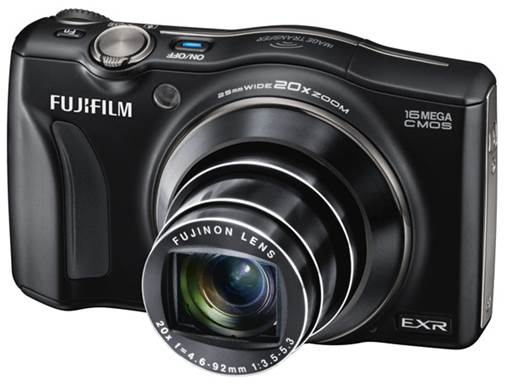Fujifilm made waves recently with their
rangefinder-inspired X-series cameras such as the X-Pro1 and X100. For those on
the hunt for something a little more budget-friendly and easier to use, there’s
the FinePix lineup to consider.
The F800EXR is Fujifilm’s latest FinePix
super-zoom compact camera, and is a successor to the F770EXR. In fact, a quick
look at the specifications sheet reveals that it’s basically the F770EXR, but
with the addition of Wireless Image Transfer functionality.

Fujifilm
made waves recently with their rangefinder-inspired X-series cameras such as
the X-Pro1 and X100.
The Wireless Image Transfer function lets
you connect the F800EXR to your smartphone or tablet, and by using the Fujifilm
Photo Receiver app, lets you transfer up to 30 images from the camera to your
smartphone or tablet. The camera creates a wireless network for your smartphone
or tablet to join, and you’ll need to be quick about making sure you get the
connection established before the camera closes the connection.
Taking the same design cues from the
F770EXR, the F800EXR is slim and easy on the eyes, with a raised hand grip on
the front which makes it easier to hold onto the camera. The mode dial is
placed at an angle between the top and rear panels and while this looks cool,
the dial placement does make for slightly awkward handling.

Taking
the same design cues from the F770EXR, the F800EXR is slim and easy on the eyes
In actual use, we did notice a couple of
quirks worth mentioning. For one, the image preview screen tends to freeze for
a split second while attaining focus. We noticed this happening at the longer
focal lengths; where half-pressing the shutter release button to focus resulted
in the image preview on the display pausing for a split second. This, coupled
with the lack of optical image stabilization, makes the F800EXR tougher to
shoot with at longer focal lengths. Autofocus was generally quick, but not so
much at longer focal lengths.
Images look good at smaller sizes, but when
zoomed in at 100%, reveal some softness around the edges that isn’t very
apparent if you’re going to be viewing images on a computer screen or tablet.
The F800EXR scored 2000 x 2000 LPH
(vertical and horizontal) on our resolution chart. Our ISO tests showed noise
starting to appear at ISO200, though this was well controlled. At ISO400, noise
is a little more noticeable, and ISO1600 is the highest we would recommend,
unless noise happens to be an artistic element you’re looking for.

The
F800EXR scored 2000 x 2000 LPH (vertical and horizontal) on our resolution
chart.
The F800EXR misses out on some key points
when compared to its closest competitors. The lack of optical stabilization
means you won’t be shooting much at its longest focal length, so this limits
the overall usability of the F800EXR as a super-zoom. Image quality is average
throughout, and the autofocus does slow down at the longer focal lengths as
well.
As a digital compact camera, the F800EXR is
a versatile option with its 20x optical zoom, easy-to-use interface and compact
size, but there are plenty of other alternatives out there which can do so much
better.
|
Basic
Specifications
§ Resolution:
16.00 Megapixels
§ Lens:
20.00x zoom (25-500mm eq.)
§ Viewfinder:
LCD
§ LCD
Size: 3.0 inch
§ ISO:
100-3200
§ Shutter:
8-1/2000
§ Max
Aperture: 3.5
§ Dimensions:
4.1 x 2.5 x 1.4 in.(105 x 63 x 36 mm)
§ Weight:
8.2 oz (232 g) includes batteries
|